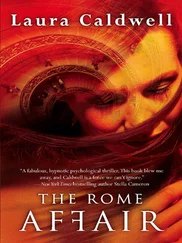The Rule of Four
Ian Caldwell and Dustin Thomason
The Hypnerotomachia Poliphili is one of the most treasured and least understood books of early Western printing. Fewer copies of it survive today than do copies of the Gutenberg Bible. Scholars continue to debate the identity and intent of the Hypnerotomachia 's mysterious author, Francesco Colonna. Only in December of 1999, five hundred years after the original text was printed, and months after the events depicted in The Rule of Four, did the first complete English translation of the Hypnerotomachia appear in print.
Gentle reader, hear Poliphilo tell of his dreams,
Dreams sent by the highest heaven.
You will not waste your labour, nor will listening irk you,
For this wonderful work abounds in so many things.
If, grave and dour, you despise love-stories,
Know, I pray, that things are well ordered herein.
You refuse? But at least the style, with its novel language,
Grave discourse and wisdom, commands attention.
If you refuse this, too, note the geometry,
The many ancient things expressed in Nilotic signs…
Here you will see the perfect palaces of kings,
The worship of nymphs, fountains and rich banquets.
The guards dance, dressed in motley, and the whole
Of human life is expressed in dark labyrinths.
Anonymous Elegy to the Reader,
Hypnerotomachia Poliphili

Like many of us, I think, my father spent the measure of his life piecing together a story he would never understand. That story began almost five centuries before I left for college, and ended long after he died. On a night in November of 1497, two messengers rode on horseback from the shadows of the Vatican to a church named San Lorenzo, outside the city walls of Rome. What happened that night changed their fortunes, and my father believed it might change his own.
I never made much of his beliefs. A son is the promise that time makes to a man, the guarantee every father receives that whatever he holds dear will someday be considered foolish, and that the person he loves best in the world will misunderstand him. But my father, a Renaissance scholar, was never shy about the possibility of rebirth. He told the story of the two messengers so often that I could never forget it, try as I might. He sensed, I see now, that there was a lesson in it, a truth that would finally bind us.
The messengers had been sent to San Lorenzo to deliver a nobleman's letter, which they were warned under pain of death not to open. The letter was sealed four times in dark wax, and purported to contain a secret my father would later spend three decades trying to discover. But darkness had fallen on Rome in those days; her honor
had come and gone, and not yet come again. A starry sky was still painted on the ceiling of the Sistine Chapel, and apocalyptic rains had flooded the Tiber River, on whose shores had appeared, old widows claimed, a monster with the body of a woman and the head of an ass. The two greedy horsemen, Rodrigo and Donato, did not heed their master's warning. They heated the wax seals with a candle, then opened the letter to learn its contents. Before leaving for San Lorenzo, they resealed the letter perfectly, copying the nobleman's stamp with such care that the tampering must have been impossible to see. Had their master not been a much wiser man, the two couriers would surely have survived.
For it wasn't the seals that would undo Rodrigo and Donato. It was the heavy black wax in which those seals had been pressed. When they arrived at San Lorenzo, the messengers were met by a mason who knew what was in the wax: an extract from a poisonous herb called deadly nightshade, which, when applied to the eyes, dilates the pupils. Today the compound is used medicinally, but in those days it was used by Italian women as a cosmetic drug, because large pupils were considered a mark of beauty. It was this practice that earned the plant its other name: beautiful woman, or belladonna. As Rodrigo and Donato melted and re-melted each seal, then, the smoke from the burning wax took hold. Upon their arrival at San Lorenzo, the mason brought them to a candelabra near the altar. When their pupils failed to contract, he knew what they had done. And though the men struggled to recognize him through their unfocused eyes, the mason did as he'd been told: he took his sword and beheaded them. It was a test of trust, his master said, and the messengers had failed.
What became of Rodrigo and Donato, my father learned in a document he discovered just before he died. The mason covered the men's bodies and drew them from the church, sopping up their blood with cheesecloth and rags. The heads he placed in two saddlebags on either side of his mount; the bodies he slung across the backs of Donato's and Rodrigo's own horses, and hitched them in tow to his own. He found the letter in Donato's pocket, and burned it, for it was a fake, and there was no true recipient. Then, before leaving, he crouched in penitence before the church, horrified by the sin he had committed for his master. In his eyes, the six columns of San Lorenzo formed black teeth from the openings in between, and the simple mason admitted that he trembled when he saw this, for as a child at the widows' knees he had learned how the poet Dante had seen hell, and how the punishment of the greatest sinners was to be chewed forever in the jaws of lo'mperador del doloroso regno.
Maybe old Saint Lawrence stared up from his grave finally, seeing the blood on the poor man's hands, and forgave him. Or maybe there was no forgiveness to be had, and like the saints and martyrs of today, Lawrence was inscrutably silent. Later that night the mason followed his master's orders and brought the bodies of Rodrigo and Donato to a butcher. The fate of their carcasses, it's probably best not to guess. Their parts were tossed into the streets and collected by the dustcarts, I hope, or eaten by dogs before they could find themselves baked into a pie.
But the butcher found another use for the two men's heads. A baker in town, a man with a touch of the devil in him, bought the heads from the butcher and placed them in his own oven as he left for the night. It was a custom in those days for the local widows to borrow the bakers' ovens after dark, while the day's embers were still hot; and when the women arrived, they shrieked and nearly fainted at the sight of what they found.
At first it seems a low fate, to be used as fodder for a trick on old crones. But I imagine a much greater fame came to Donato and Rodrigo in the way they died than ever would've come to them in life. For the widows in every civilization are the keepers of its memory, and the ones who found the heads in the baker's oven surely never forgot. Even when the baker confessed to what he'd done, the widows must've kept telling the story of their discovery to Rome's children, who, for a generation, remembered the tale of the miraculous heads as vividly as they did the monster coughed up by the Tiber floods.
And though the story of the two messengers would eventually be forgotten, a single thing remains beyond doubt. The mason did his job well.
Whatever his master's secret was, it never left San Lorenzo. The morning after Donato and Rodrigo were murdered, as the dustcart men heaped filth and innards into their barrows, little notice was taken that two men were dead. The slow progress of beauty into decay into beauty continued, and like the serpent's teeth that Cadmus sowed, the blood of evil watered Roman earth and brought about rebirth. Five hundred years would elapse before anyone discovered the truth. When those five centuries passed, and death found a new pair of messengers, I was finishing my last year of college at Princeton.
Читать дальше













